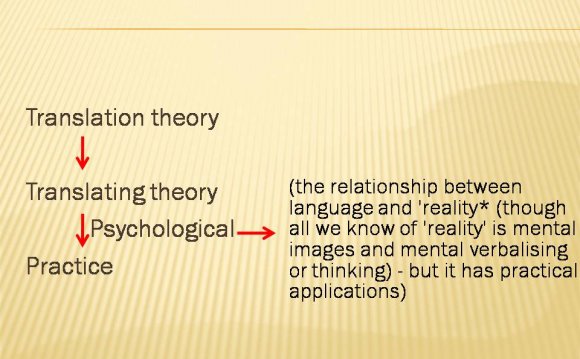
Ince translation is, above all, an activity that aims at conveying meaning or meanings of a given-linguistic discourse from one language to another, rather than the words or grammatical structures of the original, we should look briefly at the most significant and recent developments in the field of study of "meaning", or semantics. Our interest here lies in the shift of emphasis from referential or dictionary meaning to contextual and pragmatic meaning. Such a shift represents a significant development, particularly relevant to translation, and to communicative register-based approach to translation.
|
The meaning of a given word or set of words is best understood as the contribution that word or phrase can make to the meaning or function of the whole sentence or linguistic utterance where that word or phrase occurs. The meaning of a given word or set of words is best understood as the contribution that word or phrase can make to the meaning or function of the whole sentence or linguistic utterance where that word or phrase occurs. The meaning of a given word is governed not only by the external object or idea that particular word is supposed to refer to, but also by the use of that particular word or phrase in a particular way, in a particular context, and to a particular effect.The first type of meaning, i.e., the meaning of reference, is often referred to as the "referential" meaning, the "lexical" meaning, the "conceptual" meaning, or the "denotative" meaning. It is also sometimes referred to as the "signification" of a lexical item. |
MORE TRANSLATION VIDEO




 The Annals of the Kingdom of Ireland (Irish: Annála Ríoghachta Éireann) or the Annals of the Four Masters (Annála na gCeithre Máistrí) are a chronicle of medieval Irish history. The entries span from the Deluge, dated as 2,242 years after creation to AD 1616.
The Annals of the Kingdom of Ireland (Irish: Annála Ríoghachta Éireann) or the Annals of the Four Masters (Annála na gCeithre Máistrí) are a chronicle of medieval Irish history. The entries span from the Deluge, dated as 2,242 years after creation to AD 1616.







